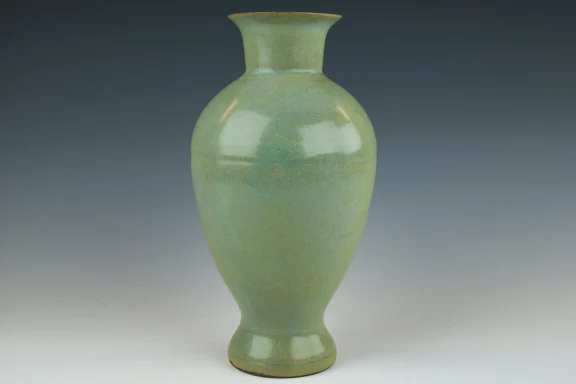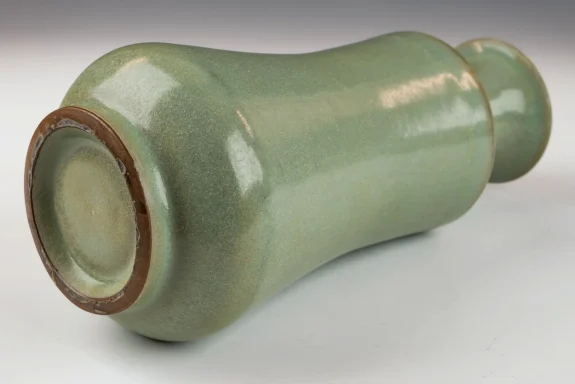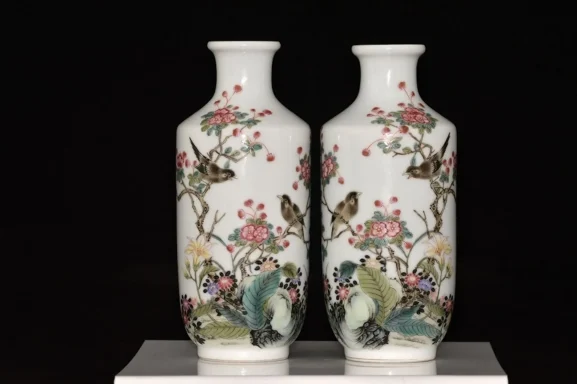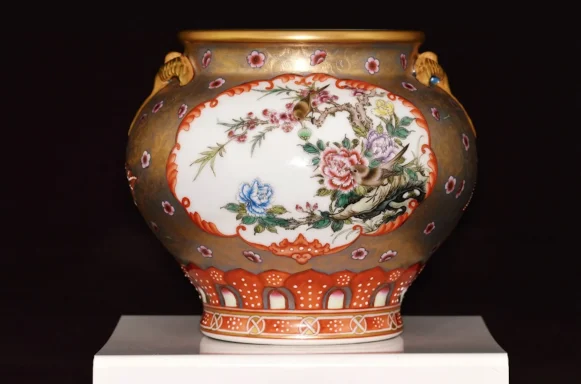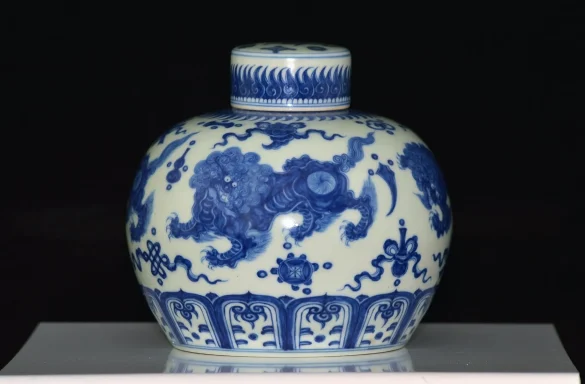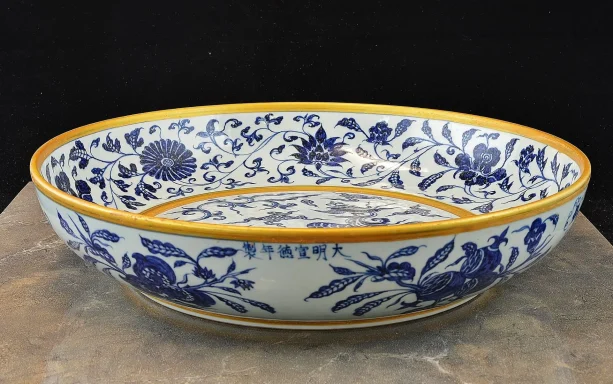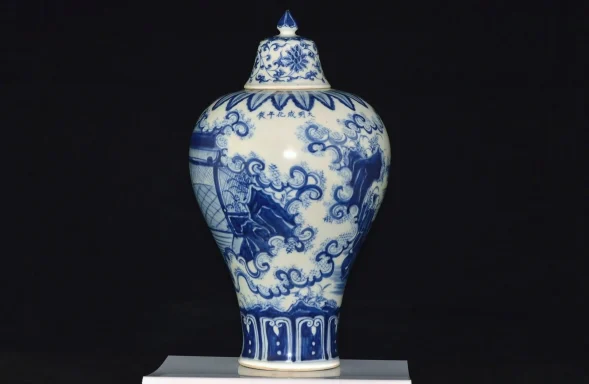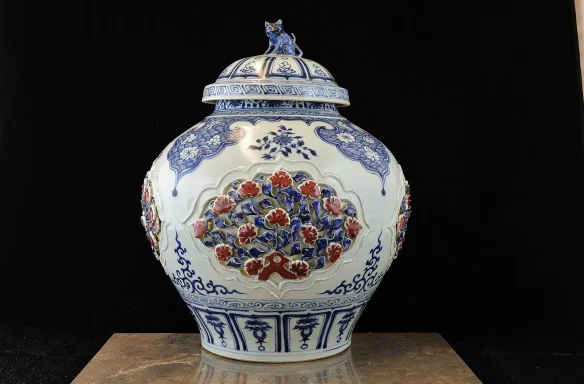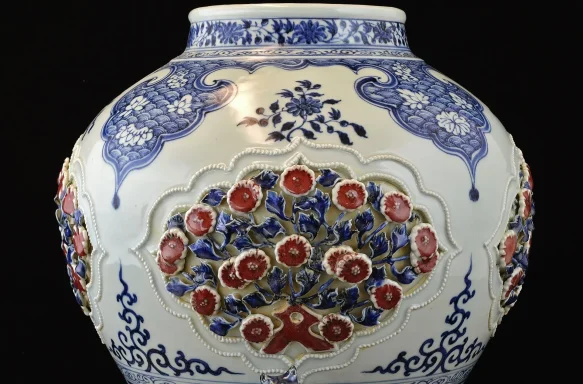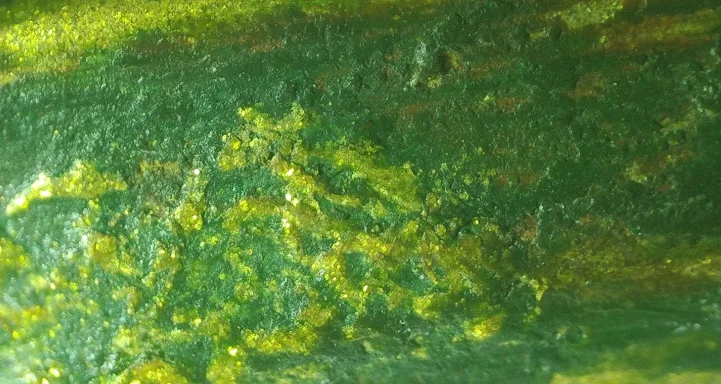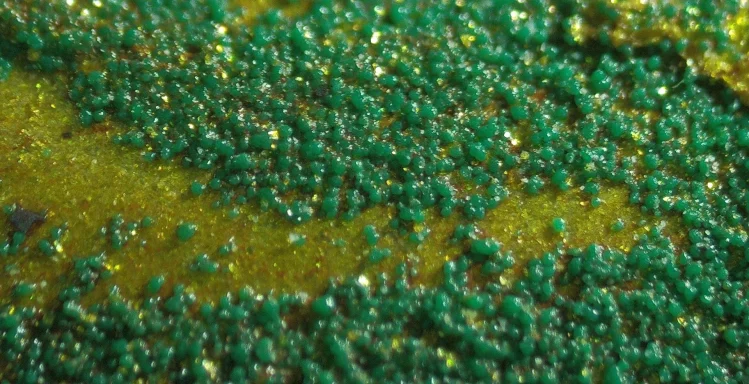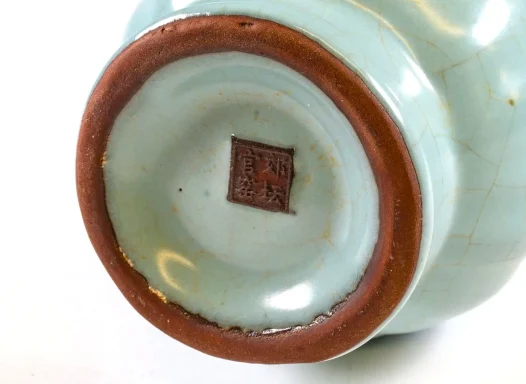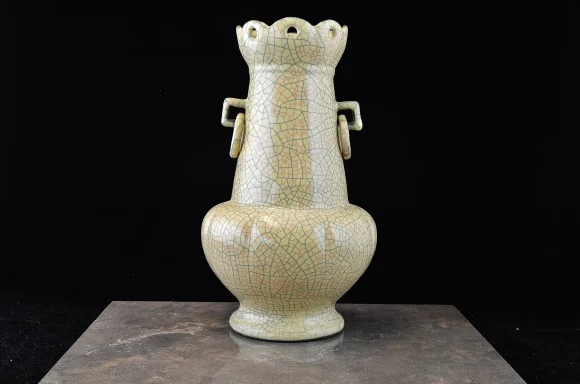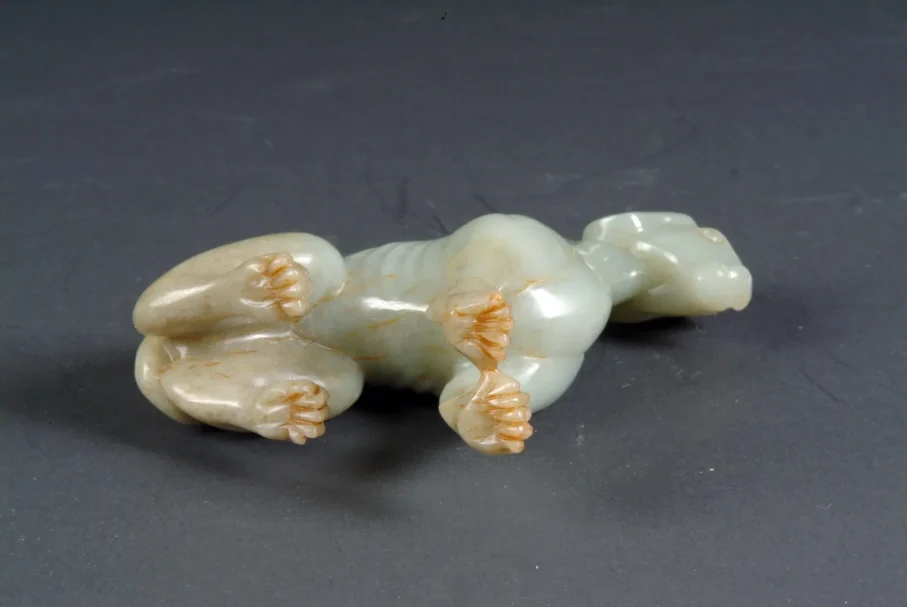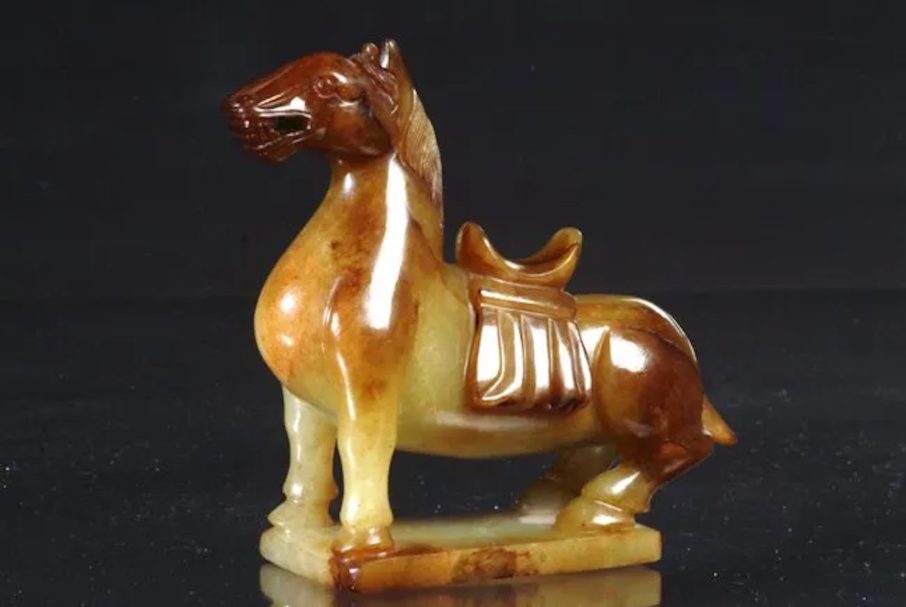Welcome to Art China Art
Explore the remarkable legacy of Emperor Huizong's Royal Ru Kiln wares, distinguished imperial porcelain from the Qing, Ming, Yuan, and Song Dynasties. Fine, exceptional Jade Animal carvings from all dynasties.
I invite esteemed institutions and credible organizations to evaluate my collection of Royal Imperial Ru ware that challenges the Established History of Ru Ware with
Unmatched Provenance and Authenticity, an opportunity that has been extended for several years. Regrettably, this opportunity has not yet been acted upon, likely due to the associated financial implications and the challenges of confronting the substantial evidence and truths presented on this platform.
Groundbreaking Discovery Challenges the Established History of Ru Ware with
Unmatched Provenance and Authenticity
Cherry Hill NJ 07/07/2025 – A shocking revelation in the world of ancient Chinese ceramics is set to disrupt the established understanding of Ru ware, one of the most prized ceramics of the Song Dynasty. Independent researcher and collector Joseph Sharon has uncovered irrefutable evidence proving that Imperial Ru wares incorporated crushed blue agate in their glazes and fire-gilded bands on their rims and bases—features that have been systematically ignored by museums and auction houses.
Microscopic Evidence Exposes Long-Held Myths
Through high-resolution microscopic analysis, the presence of blue agate within Ru ware glazes has been confirmed. This contradicts the long-held claim that no such material remained after firing or was used in Song Dynasty ceramics. Agate, with its unique melting properties, remains intact within the glaze, creating a distinctive and recognizable effect that is scientifically impossible to replicate artificially. Furthermore, many of these artifacts feature fire-gilded bands, a lost technique using a gold and mercury mixture that corrodes naturally over time, forming cuprite and botryoidal malachite—a signature of genuine Imperial wares. This technique has not been in use since the mid-1800s due to safety concerns, further proving the age and authenticity of these artifacts.
Resistance from Museums and Auction Houses
Despite sharing detailed analyses and microscopic photographs, leading auction houses and institutions, have refused to answer any of my request. The implications of this research challenges their credibility and millions of dollars' worth of past Ru ware sales, many of which were misattributed merchant-grade wares.
"The art world must prioritize historical accuracy over institutional reputations and market interests," says Joseph Sharon. "Refusing to engage with this evidence is a disservice to scholarship and collectors alike."
Call to Action: Seeking Open-Minded Scholars and Institutions
Joseph Sharon The proof is on this website for all to see whether they are independent researchers, universities, or institutions to examine the collection and validate these findings. History must be shaped by evidence, not by the reluctance of institutions to admit past mistakes. The time for truth is now. For media inquiries, interview requests, or collaboration opportunities, please contact: Joseph Sharon
E-MAIL jrs@artchinaart.com
WEBSITE www.ArtChinaArt.com
Joseph Sharon is a dedicated independent researcher and collector specializing in Song Dynasty ceramics. With an extensive collection and a passion for uncovering historical truths, Joseph Sharon has spent years analyzing and documenting evidence that challenges conventional narratives. Through scientific analysis and meticulous research, their goal is to bring long-overdue transparency to the world of ancient Chinese ceramics.
Click images to expand and enlarge
The Northern Song Dynasty first commissioned Royal Imperial Ru ware is thoroughly documented in historical texts, indicating that Emperor Huizong instructed the Ru Kiln to produce celadon wares characterized by modesty, understated elegance, and a deliberate simplicity that evokes a sense of antiquity. Notably, these initially commissioned Royal Imperial wares incorporated Rare Blue Crushed Agate into the glaze formulation. This can be discerned through the use of a 20x loupe, and microscopic photographs reveal the distinctive specks of agate found in each piece. The use of crushed agate is exclusive to the Official Royal Imperial Ru wares developed under Emperor Huizong's patronage. These early commissioned wares exhibit a variety of unique forms previously unseen, showcasing the remarkable skill and artistry of the Ru kiln artisans. The foot rings of all first official Ru wares remain unglazed. Additionally, each piece features a fine, cracked ice crackle in the glaze, with interior glazing also present. Many of these wares have marks inscribed on the bases, often inscribed with "feng hua," and the vases typically feature trumpet-shaped mouths, distinguished by their larger dimensions compared to merchant and tribute wares. The first commissioned Official Royal Imperial Ru wares are crafted from an ash-colored biscuit that transforms to brown upon firing. Furthermore, each piece exhibits the signature fine cracked ice crackle in the glaze, maintaining consistent interior glazing. Exclusively produced for the Emperor and his court, these wares reflect Emperor Huizong's appreciation for beauty in simplicity. He regarded each piece as an artwork, embracing any imperfections, which ultimately remained within the court as evidence of his vision's fulfillment. An illustrative close-up of a first commissioned Official Royal Imperial Ru vase depicts a droplet of glaze adhering to the foot ring, highlighting chips of Rare Blue Agate within the glaze. The accompanying ancient writings affirm the historical significance of these pieces as the legendary First Official Royal Imperial wares commissioned by Emperor Huizong of the Northern Song Dynasty. ppjrs
The Northern Song Dynasty Ru Kiln was commissioned to produce the exquisite second series of official Royal Imperial Celadon wares for Emperor Huizong and his court. These wares are characterized by their elegance, luxury, and aesthetic beauty, surpassing both merchant and tribute wares in refinement and size, while consistently showcasing a distinctive celadon hue. Notably, all pieces from this second series are infused with rare crushed blue agate within their glaze, an element observable through a 20x loupe, as evident in the microscopic photographs accompanying each piece. The use of crushed blue agate is exclusive to the Official Imperial Ru wares developed during Emperor Huizong’s reign. Furthermore, these second commissioned Royal Imperial wares exhibit a variety of unique forms that underscore the exceptional craftsmanship of the Ru kiln. The foot rings of these wares are unglazed and were intentionally fired flat within the kiln. Two vases feature fire gilding over copper bands exhibiting corrosion from cuprite and malachite, which serves as a reliable indicator of the artifact's age, more credible than thermoluminescence (TL) tests and widely acknowledged by experts to verify authenticity—an attribute that is impossible to replicate. It is important to note that all second-commissioned Royal Imperial wares are unmarked. They possess an off-white biscuit that transitions to a brownish tone post-firing. The wares exhibit a rich, smooth glaze with no crackling, while some pieces feature fire gilding over copper bands, and those without bands likewise maintain a flawless glaze. The vase displayed, adorned with a gilded silver band, shows minimal crackling, restricted to a few fine lines. The gilded silver band, exhibiting a darker celadon glaze enhanced with rare blue crushed agate, is visible under magnification. The fire gilding on silver bands has pores in the gild, allowing tarnish to seep through the pores, resulting in pronounced black corrosion on the bands ppjrs
The Northern Song Dynasty Ru Kiln Tribute wares are typically small artifacts characterized by their fire-gilded copper bands, which exhibit corrosion patterns of cuprite and malachite. These distinctive features serve as reliable indicators of their age, often considered more reliable than thermoluminescence (TL) tests, earning the trust of experts in the field for authenticity verification. The production of tribute wares involves a glazing process that encompasses the entire surface. Notably, the pieces are fired on setters equipped with prongs to elevate the items above the kiln floor, resulting in spur marks on the base that are approximately the size and shape of sesame seeds. The glaze on tribute wares is smooth and showcases no inclusion of crushed agate in the glaze. It is important to note that the presence of crushed blue agate in the glaze is exclusive to Ru ware, which is the Commissioned Official Royal Imperial wares. Typically, tribute wares feature either an off-white or ash-colored biscuit, representing the finest quality merchant wares that were adorned with fire-gilded copper bands and presented as tribute to Emperor Huizong. ppjrs
Northern Song Dynasty Ru-Kiln merchant wares are distinguished by their fine quality; however, they are primarily positioned in the market for affluent merchants, while items with imperfections are made available to the broader public at substantially lower prices.
Three Northern Song Dynasty Ru Kiln pieces displayed are examples of Merchant wares. Previously, the only known specimens of such wares were those collected by the Qianlong Emperor during the Qing Dynasty. However, following China's integration into the global market, numerous exquisite pieces and collections that had been concealed have now become accessible. Merchant wares are typically smaller than Commissioned Royal Imperial wares and exhibit complete glazing, including the foot ring. These items were fired using setters equipped with prongs, which elevated the pieces above the kiln floor. Consequently, they display spur marks that are approximately the size and shape of sesame seeds—distinctive traits that are exclusive to merchant and tribute wares. It is important to note that merchant wares lack the refinement of tribute wares, as the most exquisite examples were adorned with fire-gilded copper bands and presented to Emperor Huizong as tribute. ppjrs
The Qing Dynasty's most prominent emperors, who represent the pinnacle of Imperial Porcelain, are Kangxi, Yongzheng, and Qianlong. These rulers significantly influenced the artistic and cultural achievements during their respective reigns, marking a transformative era in the history of Chinese porcelain production.
During the Ming Dynasty in China (1368-1644), the production of porcelain experienced remarkable advancements, coinciding with significant economic growth in the 15th century. This period saw a substantial increase in the demand for premium handcrafted goods, both domestically and internationally. The Ming Dynasty is especially renowned for its exquisite ceramics, with particular emphasis on the iconic cobalt blue-and-white porcelain produced in celebrated centers, such as Jingdezhen in Jiangxi province. Today, Ming porcelain remains highly esteemed among collectors and has left a lasting influence on ceramic practices across various nations.
The Yuan Dynasty, a term in Chinese that translates to "Origin," extended from 1271 to 1368 and represents a significant era in the extensive history of Chinese porcelain. This period, governed by Mongol leadership, initiated a remarkable phase of artistic evolution and technological advancement within the ceramic arts. The advent of novel techniques, along with a distinctive fusion of cultural influences, resulted in the production of porcelain artifacts that were not only exquisite for their time but also continue to engage and enchant collectors and connoisseurs in the present day.
The Northern Song dynasty (960–1127) represents a pinnacle in the evolution of Chinese ceramic craftsmanship, characterized by significant innovation, technical proficiency, and the establishment of renowned kilns whose products are still esteemed today. Notably, the Chai, Yaozhou, and Cizhou kilns are distinguished for their unique stylistic approaches and impactful methodologies. The kilns of the Northern Song dynasty serve as exemplars of superior artistry and groundbreaking techniques. While the Chai kiln is enveloped in historical mystique, the Yaozhou kiln is celebrated for its exquisite celadon glazes, and the Cizhou kiln is recognized for its intricately painted ceramics. Collectively, these kilns stand as enduring symbols of the period’s technical expertise and artistic richness, leaving an indelible mark on both imperial and popular ceramic traditions throughout Chinese history.
The Northern Song Dynasty (960-1125) and the Southern Song Dynasty (1125-1279) represent significant periods in Chinese history. The Northern Song presided over a predominantly unified China from their capital in Kaifeng. However, following the incursion by the Jin state into northern territories in the early 12th century, the Song court relocated southward to a new capital. Ding ware is a notable ceramic product from this era, celebrated for its delicately formed vessels and refined, often understated ornamentation. The body of Ding ware typically exhibits a white to grayish hue, finished with a thin, nearly transparent glaze that may possess a subtle ivory or bluish tint. While commonly referred to as porcelain, some scholars categorize Ding ware as stoneware, owing to its specific firing temperature and material composition. Scientific examinations have determined that Ding ware predominantly utilized kaolinitic clay, without the incorporation of petuntse (referred to as "porcelain stone"), a substance typically characteristic of true porcelain. This unique formulation contributes to the ware’s distinctive texture and acoustic properties. The decorative techniques employed were primarily limited to incised, molded, or impressed designs, often featuring floral or abstract motifs rendered in delicate low relief, thus highlighting the elegance of the form and the purity of the glaze.
(From Sotheby's Catalog) One of the earliest documented references to guan kilns appears in *Tan zhai bihen* (Composed Measures from the Tan Studio), authored by the Southern Song scholar Ye Zhi. He notes that the kiln site at Xiuneisi, designated as the inner kiln, directly inherited the production techniques of the ancient capital. This site specialized in the creation of celadon wares that utilized a clear clay standard. The resulting products were exceptionally refined, featuring a glossy colored glaze that exhibited both brilliance and translucence, leading to their esteemed status throughout the realm. In subsequent developments, a new kiln was established at Jituotianxia, which produced wares markedly different from those crafted at the older kiln.
The elder brother engineered a distinctive category of ceramic ware, which later sources identify as characterized by its crackled glaze; this specific type is referred to as Ge ware. Ge ware is notable for its "double crackle" effect, exhibiting two distinct types of crackle, a feature often regarded as its hallmark. This particular form of double crackle is termed "gold thread and iron wire." The clay body is a dark hue, and it is fired to a stoneware consistency by Western standards. Traditional literature frequently mentions the "purple mouth and iron foot" in connection with this ware. Despite the intricate pattern of myriad intersecting crackle lines, the surface texture remains fine and smooth to the touch. This refined craftsmanship is attributed to the skilled Elder brother. It is worth noting that the value of these unadorned wares parallels that of unpolished gemstones.
Despite its renowned status, much about Jun ware remains ambiguous and is a topic of ongoing debate among scholars. The term encompasses various types of pottery produced across multiple centuries and locations. The forms are predominantly simple, with the exception of official wares, and additional decoration is typically restricted to the glaze effects. Generally, "unofficial" wares are crafted using a wheel-throwing technique, while the official varieties are formed through molding. Typically, the foot of pottery from the later periods is left unglazed and exhibits a brown hue; the rims of bowls may also appear brown or greenish due to thinner glaze application. Notably, Song dynasty examples exhibit meticulous glazing techniques within the foot area. The shapes from the Song era are characterized by sharper lines and thinner profiles compared to the subsequent Jin and Yuan periods. In contrast, Jun ware features a notably thicker glaze, often not extending down to the foot of the piece. The dimensions and forms of Jun ware distinguish it from other pottery groups, as they tend to be larger and heavier, often exhibiting more intricate shapes. This complexity arises from the use of double (two-part) molds, reportedly originated by Jun ware potters. Many rims are characterized by irregularities, resembling floral patterns, and numerous pieces bear incisions at the bases, inscribed with the characters feng hua, referencing a building within the main Song palace in Kaifeng. Certain high-quality pieces appear to have undergone a two-stage firing process: an initial firing prior to glazing, followed by a subsequent firing at elevated temperatures post-glazing. Although Jun wares did not initially possess significant prestige during the Song and Yuan dynasties, they garnered considerable acclaim among collectors from the Ming dynasty onward. Today, authentic Jun ware remains highly sought after and commands substantial prices in the art market.
